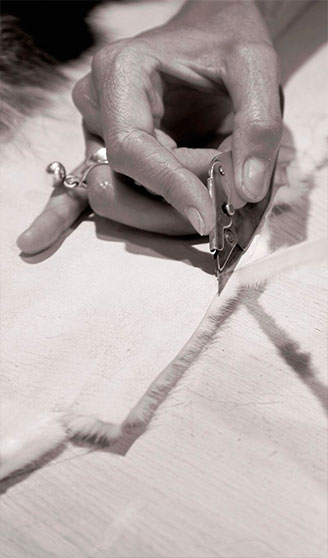Natural fur garments are renewable, long lasting products of extraordinary quality. Natural fur has been produced and used since men have set foot on this world, and therefore its roots are those of artisanal craftsmanship. Such ability to work skins is nowadays possessed by highly skilled workers who pass their knowledge on to the next generation.
Today, more than ever before, the fur industry is committed to guaranteeing that all of its items are produced in respect of strict rules and global regulations on responsibility, sustainability and compliance.
As each Tosato1928 fur garment is manufactured according to international protocols and standards, we are able to guarantee an extremely high quality of the skins and a full traceability of the trade and supply chain, therefore offering a valuable final product.
Discover how our garments are produced:







